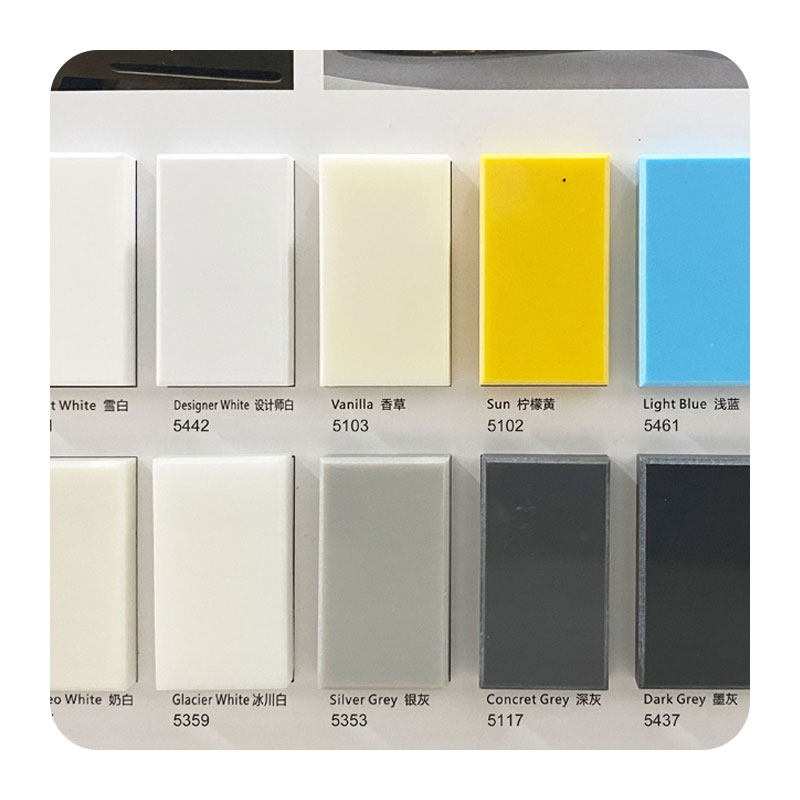
Solid Surface: Unveiling the Advantages and Disadvantages
In the world of interior design and construction, solid surface materials have gained significant popularity, especially for applications such as countertops, bathroom fixtures, and wall cladding. Like any material, solid surface comes with its own set of advantages and disadvantages. Understanding these can help you make an informed decision when choosing materials for your next project.
Advantages of Solid Surface
Durability and Longevity
Solid surface materials are renowned for their durability. Composed of a blend of acrylic, polyester resins, and natural minerals, they are resistant to scratches, stains, and impacts. Minor scratches can often be buffed out, restoring the surface to its original condition. This repairability contributes to the material's long lifespan, making it a cost - effective choice in the long run. For instance, in a busy kitchen where spills and cuts are common, a solid surface countertop can withstand daily wear and tear better than many other materials.
Hygienic Properties
One of the major selling points of solid surface is its non - porous nature. Unlike natural stone or tiles, which can harbor bacteria, mold, and mildew in pores and grout lines, solid surface creates a seamless barrier. This makes it an ideal choice for areas where hygiene is crucial, such as kitchens and bathrooms. Cleaning is a breeze; a simple wipe with a mild soap and water solution is usually sufficient to keep the surface clean and sanitized.
Aesthetic Appeal and Customization
Solid surface offers unparalleled design flexibility. It is available in a vast range of colors, patterns, and textures, from solid hues to those mimicking natural materials like marble or granite. Moreover, due to its thermoformable properties, it can be shaped into curves, rounded edges, and integrated sinks, creating a seamless and sophisticated look. Designers and homeowners can bring their unique visions to life, whether it's a modern, minimalist kitchen or a luxurious bathroom with custom - crafted fixtures.
Ease of Maintenance
As mentioned, the non - porous surface of solid surface materials resists stains from common household substances like coffee, wine, and oil. Additionally, the absence of grout lines in installations means there are fewer areas for dirt and grime to accumulate. For minor damages, such as scratches or small burns, simple DIY repair methods can be employed, eliminating the need for professional restoration in many cases.
Seamless Integration
Solid surface can be fabricated to have nearly invisible seams, especially when installed by skilled professionals. This seamless appearance not only enhances the aesthetic appeal but also reduces the risk of water infiltration and the growth of mold or bacteria at the seams, which is a common issue with other materials like tiled surfaces.
Disadvantages of Solid Surface
Higher Initial Cost
One of the primary drawbacks of solid surface materials is their relatively high upfront cost. Compared to materials like laminate or some types of ceramic tiles, solid surface can be significantly more expensive. This cost includes not only the material itself but also the specialized fabrication and installation required to make the most of its unique properties. However, it's important to note that the long - term durability and low maintenance costs may offset this initial investment over time.
Susceptibility to Heat
Although solid surface is durable in many aspects, it is not highly heat - resistant. Placing hot pots, pans, or baking dishes directly on the surface can cause discoloration, warping, or even permanent damage. To avoid this, trivets or hot pads must be used at all times. This requirement can be a hassle, especially in a busy kitchen environment where quick and convenient placement of hot items is often desired.
Limited Heat Resistance in Repairs
In the event that a significant repair is needed, the heat - sensitive nature of solid surface can pose challenges. Some repair methods may involve heating the material, and if not done carefully, it can lead to further damage or uneven results. This means that repairs often require the expertise of professionals who are experienced in working with solid surface materials.
Availability and Installation Expertise
Solid surface materials may not be as widely available as more common building materials. Additionally, proper installation requires trained professionals who understand the intricacies of working with this material. Finding qualified installers in some areas can be difficult, and the cost of installation may add to the overall expense of the project.
Perceived Lack of Natural Aesthetic
While solid surface can mimic the look of natural materials to some extent, it may not fully replicate the unique veining, texture, and character that natural stone offers. For those who value the authenticity and one - of - a - kind appearance of natural materials, solid surface may not meet their aesthetic expectations.
In conclusion, solid surface materials offer numerous benefits, including durability, hygiene, and design flexibility, but also come with certain limitations. Weighing these advantages and disadvantages against your specific needs, budget, and aesthetic preferences is essential to determine whether solid surface is the right choice for your project.












